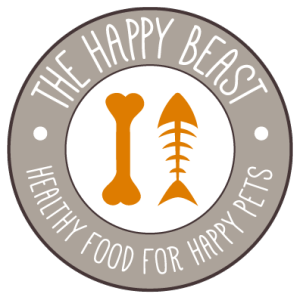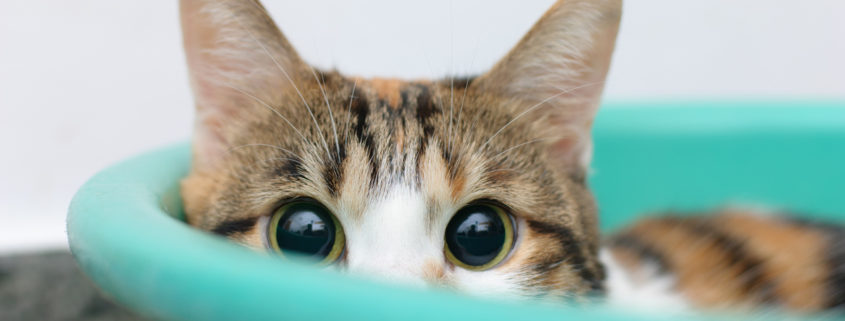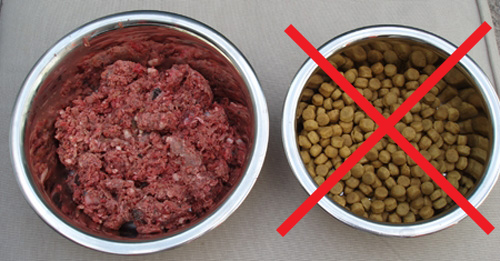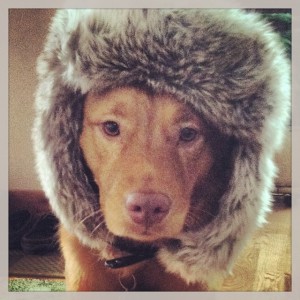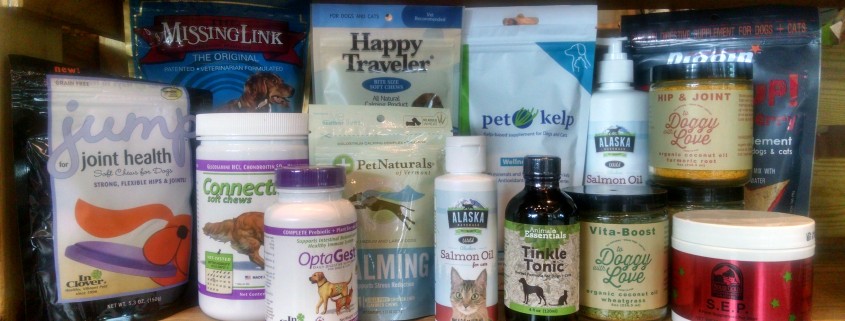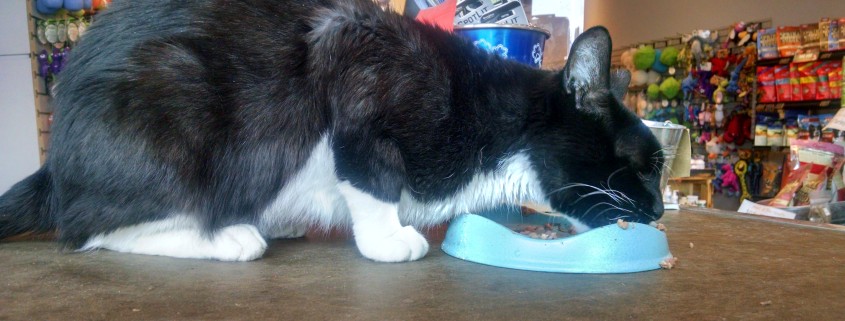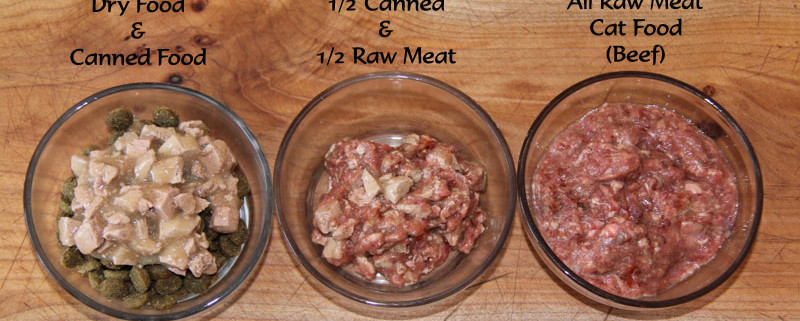Retrain the Cat Brain: Solutions for Eliminating Kibble
As we approach our July 4th Kibble Independence Day, we want to prepare and support our customers who are transitioning their cats off of kibble (dry food) by shedding some light on the inner workings of the cat brain and why you may be encountering some challenges along the way.
Why are cats such finicky eaters?! It’s fresh meat, just take a bite! (At least that’s how I’ve felt when transitioning some of our foster kitties.)
The most important lesson that any animal learns is how to identify and secure a food source. Wild animals teach their young what food is by bringing them dead or nearly dead prey in order to teach them how to hunt and what their natural food source is. A young animal needs to know how their prey looks, smells, and tastes.
We humans, teach our cats the same lesson when we offer them food, whether it’s kibble, canned, or raw food. Cats learn what their “prey” is from a very young age. This is why it is often much easier to transition a younger cat onto a raw food diet than it is with an older cat. Our mantra for transitioning any cat is “stay persistent and consistent in your attempts.” Some cats learn quicker than others, but as long as you don’t give up, your attempts will eventually be rewarded.
In addition to understanding the benefits of feeding a “zero” kibble diet, we think understanding how cats relate to their food has the potential to give us a bit more patience in the process. Our foster cat, Carlos, has just started eating about 1-2 oz. of fresh food per day, and it has taken close to two months. Compare this experience to feeding one of our foster kittens, 6-week-old Clementine, who has devoured raw food without hesitation. The experience is as different as night and day, which also speaks to the importance of introducing healthy food and habits as early on as possible.
Common Challenges & Solutions:
- My cat is now waking me up at 5am to EAT!!! Get an automated feeder to help adjust to feeding your cat only twice per day rather than the “free feeding” that we often see with cats on a kibble diet. At The Happy Beast, we carry a great automated feeder from Petsafe that includes a tray so that you can fill it with either canned or freeze-dried raw food. You set the timer and the top is released at the designated chow time.
- Keeping cats off of kibble. Some cats will put up a fight when it comes to trying a new food. Maybe they will eat the new food really well at first, but then a few days later won’t even look at it. Do not cave in and give them their old kibble! If you give in, you will essentially be starting the entire process over. Of course we don’t want you to starve your cat; the process simply requires offering a variety of different options throughout the day. We suggest rotating foods and, at a minimum, trying three different flavors and three different brands. When you find a brand and flavor that works, you can use that as the foundation of for your cat’s calorie intake, but it is still important to offer them different types of food since you never know when you will find a “new favorite.”
- My cat is now crazy with energy! Most cat’s will feel a renewed sense of energy once they have transitioned off of kibble and onto a fresh food diet. Take this opportunity to start a new play routine with new toys or supervised outside time. Or introduce a cat harness and be the wonderful weirdo who walks their cat down the sidewalk! 🙂
For more info about Kibble Independence Day or transitioning your cat off of kibble, check out a few more of our recent blog posts. Good luck and stop by the store if you have questions or would like to talk more.
- POST: Cats Eat Meat! Phasing out kibble for cats at The Happy Beast
- POST: Kibble Transition Guide for Picky Cats
- POST: What is the Difference Between Raw and Canned Food for Cats?
- POST: Feline Nutrition with Veterinarian Dr. Angie Krause
